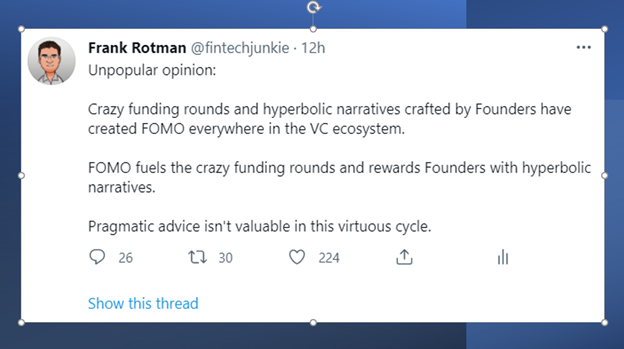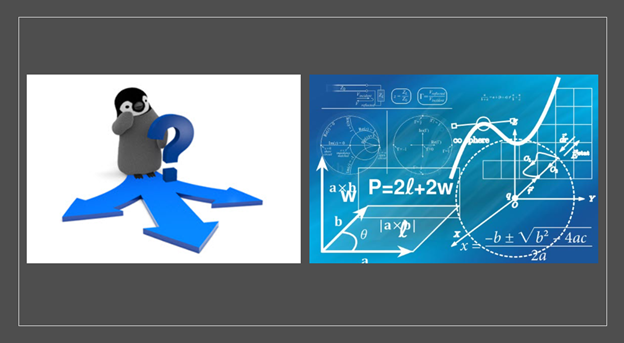
Most successful startups find product-market fit by doing a single thing better or cheaper than other available options. But most startups struggle to crack the code on additional products.
Here are 5 common fallacies to avoid if you want to expand beyond a wedge product:
Here are 5 common fallacies to avoid if you want to expand beyond a wedge product:

2/X22: Fallacy 1: We’re good at wearing multiple hats
The belief that world class talent can be infinitely stretched is flat out false. Tasking your best people to “do the old while cracking the new” is the best way to maximize a startup’s chances of failure.
The belief that world class talent can be infinitely stretched is flat out false. Tasking your best people to “do the old while cracking the new” is the best way to maximize a startup’s chances of failure.
3/22: Founding team members struggle to wrap their heads around the thought that they won’t be directly involved in everything happening at their company and in the middle of all critical decisions. Only when a team is ready to deal with this can it evolve.
4/22: A general truism is that a startup only solves problems that it organizes around so getting organizational structure right is important. It’s also a truism that if a task is owned by everyone it’s the same as it being owned by no one.
5/22: To maximize success, an “Accountable Executive” should be put in charge who obsesses about delivering a world class solution to the target customer base. If the AE isn’t losing sleep over “cracking the code” then they’re either the wrong AE or they’re spread too thin.
6/22: What a startup needs to internalize is that an AE can only be held accountable for results that are generated directly from decisions they make. And it’s difficult for an AE to deliver results if the necessary resources aren’t readily available and controlled directly.
7/22: The back belt move is to turn the core business over to a talented operator and assign the best builder to product expansion. In many startups, the core business ends up being run by someone who built it from the ground up but who might actually be better at 0 to 1 tasks.
8/22: Fallacy 2: Scaling will be easy because we have customers who love us
Just because a startup’s customers love its wedge product doesn’t mean they’ll want or need its expansion products. Not all customers have the same set of issues!
Just because a startup’s customers love its wedge product doesn’t mean they’ll want or need its expansion products. Not all customers have the same set of issues!
9/22: This leads to a “Fraction of a Fraction” problem.
For any given new product, only a fraction of a startup’s customers have needs that the product is designed to address. And only a fraction of these customers will end up buying from the startup.
For any given new product, only a fraction of a startup’s customers have needs that the product is designed to address. And only a fraction of these customers will end up buying from the startup.
10/22: This implies that relying on an existing customer base to reduce CAC can work but only when penetration rates are extremely high (which is rare). If a startup can’t figure out how to market the product independently, then the size of the ultimate prize is limited.
11/22: Fallacy 3: Parity is good enough because our customers love us
Many startups fail to internalize the narrative violation that surrounds this statement. Startups succeed when their wedge is a best-in-class offering so why would parity be good enough for expansion products?
Many startups fail to internalize the narrative violation that surrounds this statement. Startups succeed when their wedge is a best-in-class offering so why would parity be good enough for expansion products?
12/22: If new products aren’t held to a “best-in-class” standard then it’s in a customer’s best interests to shop. To dominate a market you have to answer “yes” to the question:
“If a rational consumer were faced with perfect information would they pick your product?”
“If a rational consumer were faced with perfect information would they pick your product?”
13/22: Unless a startup offers best-in-class products they’re asking customers to make sub-optimal decisions. Brand can carry some weight as can deep integrations, but adoption will ultimately be limited by the quality and cost of the solution to the end customer.
14/22: Fallacy 4: We can only offer a new product when it’s been perfected
If a startup holds itself to a V5.0 standard because it’s scared of offering existing customers a V1.0 experience then it’s behaving like an incumbent. And guess who incumbents lose to? Startups.
If a startup holds itself to a V5.0 standard because it’s scared of offering existing customers a V1.0 experience then it’s behaving like an incumbent. And guess who incumbents lose to? Startups.
15/22: Scaled startups can fall trap to extra cycles of new product refinement before in-market testing begins because they’re scared of getting it wrong. This presumes that the startup already knows the optimal form and fashion of the product which can’t be correct.
16/22: Perfection pre-launch isn’t how a startup found product-market fit with its wedge product, so why would it work for launching additional products? Successful muti-product startups are skilled at getting feedback with V1.0 products and adjusting accordingly.
17/22: Fallacy 5: We’re proven builders so it will be easier to build than to partner or buy
Most startups pride themselves on their ability to design products and ship code. It’s in their DNA and it’s the foundation for the success of their wedge product.
Most startups pride themselves on their ability to design products and ship code. It’s in their DNA and it’s the foundation for the success of their wedge product.
18/22: But while these skills were valuable in cracking the code on a startup’s wedge product, there are additional factors that should weigh heavily in the decision to build, buy or partner. Assuming that building is the only viable path is the result of sloppy thinking.
19/22: Time horizon example:
Products take time to perfect. If a startup’s core business is growing quickly then the S-curve of a new product might not catch up quickly enough to move the needle within a time horizon that matters. Buying or partnering might be better options.
Products take time to perfect. If a startup’s core business is growing quickly then the S-curve of a new product might not catch up quickly enough to move the needle within a time horizon that matters. Buying or partnering might be better options.
20/22: Skill gap example:
Building a new product might require skills that don’t exist in a startup. Founder-market fit is a real thing and a startup might struggle to attract top-tier talent with essential product-specific skills. Buying or partnering might be better options.
Building a new product might require skills that don’t exist in a startup. Founder-market fit is a real thing and a startup might struggle to attract top-tier talent with essential product-specific skills. Buying or partnering might be better options.
21/22: And making a buy decision is usually tainted by real-world issues. Dilution, culture fit and integration challenges can’t be ignored. But back in a former life I was told by a wise person that the only thing worse than buying revenue is NOT buying revenue.
22/22: TL;DR: Most monoline startups aspire to become full-fledged multi-product companies. But most startups fail at this challenge. Success requires setting an organization up properly, avoiding common pitfalls, thinking clearly and acting decisively!
• • •
Missing some Tweet in this thread? You can try to
force a refresh










